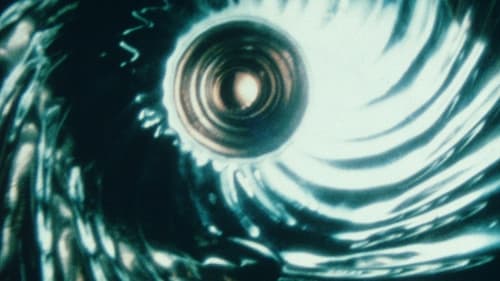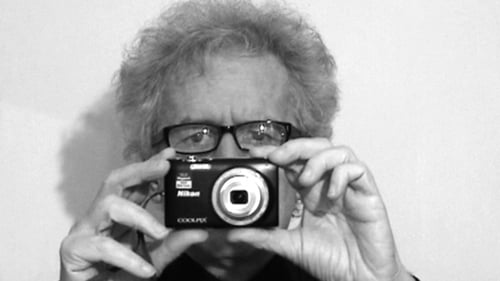
Gaël Badaud
출생 : 1945-03-25, France
사망 : 2002-01-01
약력
At the age of 32, Gaël Badaud inaugurated a period of intense creativity (drawing, poetry, vocal music, film), after experiencing a constant wandering and struggle for survival, which marked him for his entire existence. Retired from his parents (gypsy mother and Breton father) by the Public Assistance when he was 4 years old, he was placed on a farm with a foster family. But this tormented being feels different in this environment foreign to his nature. At the age of 20, he left Loire-Atlantique and moved to Paris. Ten years later, in 1976, he meets Teo Hernandez, with whom a fruitful exchange takes place. He becomes the interpreter of the filmmaker's films, which, teaching him to read and write, allows him to express his sensitivity. In return, he shares with him his experience of "life in a vacuum". From their collaboration are born Liberté provisoire (1977), Gaël (1978) and Tables d'hiver (1978-1979) - filmed by Téo - who give us the keys of their relationship, and the achievements of Gaël, filmed, according to his mentor, "According to his personal gaze, without worry of any school or any conceptualization, cinema abrupt in the sense that it irrupted without rhetoric in the field of the filmic. Cinema away from the recipes and which proposes a new look, that of the innocence ".

Himself (voice)

Himself (voice)

Director

Director

Eyes and ears travel discontinuously through everyday life and the sub-worlds of the city and the body. A fragmented and subjective day-to-day chronicle that outlines a recurring obsession for registering even the most ordinary things, where the least poetic aspects of life, that is to say, the most somber ones, become the eye’s filter.

Director

"Sounds of images" come to me from the windows overlooking rue Saint-Maur (the former pilgrims' path to Saint-Denis) and suddenly make me want to take a closer look. "Images", at the same time, spring from T.S.F.'s post, Louis Moreau Gottschalk starts playing on the keyboard of the pedestrian crossing at the bottom, there, just below my windows; Henri Vieuxtemps makes the umbrellas dance to an old American tune and Gaël, on a visit, takes up this tune on his magic flute. "Some naturalists claim that insects adapt to the vegetation around them and modify their physiology accordingly," says Louis Moreau Gottschalk; I claim that some filmmakers adapt to the spectacle around them and modify their perception of the world accordingly. Certainly I am one of them, and I console myself by thinking that I am not the only one of my kind.

Editor

Editor

Editor
Outtakes from Maya

Teo Hernandez films waste and scrap found on the pavements of the streets of Paris. “Sidewalks are great subjects: garbage, objects and materials, stains, signs, are a movie subject.”

Editor

In the early '80s, this collective of artists invented a style of cinema made in 4 hands, where each of the protagonists is also a filmmaker.

Director
In the early '80s, this collective of artists invented a style of cinema made in 4 hands, where each of the protagonists is also a filmmaker.

Through the use of portraits, shadow play and reflections, this series of exercises with and from body language compose a "four-handed" look against the notion of authorship: a vindication of the community content (repressed?) in every image.

Director
Through the use of portraits, shadow play and reflections, this series of exercises with and from body language compose a "four-handed" look against the notion of authorship: a vindication of the community content (repressed?) in every image.

One of my last films to be made indoors was La vie brève de la flamme. I used light in a very expressionist manner — still with the technique of a very active camera. (T.H.)

A gong will never abolish chance? If chance is travesty of desire, and desire movement without measure, cinema is vibration of this desire in fugue.

Editor
Outtakes from the movie.

Himself
Outtakes from the movie.

Editor

Director

Director

The film Graal goes (as well as all the films which precede it) toward an open and avowed paganism, in which pagan force and magic imbue all the subjects at all times. (...) This is not about "the" Holy Grail and its legend but about the concept of the Grail, taken in a larger sense as a universal archetype: abbreviation, metaphor of the cosmos. In fact, achievement. That is what the Grail is: the achievement's completion.

Lacrima Christi, third part of the tetralogy Le Corps de la Passion (The Body of the Passion, 1977-1980), is inspired by Christian mythology, from which it draws a creative transformation force, in a search for identity that questions the two cultures to which the filmmaker belonged.

Director
Outtakes from the movies

Director
The song composed by the author modulates the phases of the film and constitutes, in its entirety, the specific form of a call.

Winter 1978-1979: In his signature style, Hernández films hearty meals, long afternoons and candlelit dalliances inside his residence on rue des Entrepôts.

Director
The construction of the film outlines the successive steps of a path that, as we move forward, reveals the different stages of its presentation: the moon, the rose, the child, the candle and the skull are linked in a unique picture that gives its internal meaning. Elements connected by the route of the film to lead to the final image: one in which the meaning becomes external.

An approach to Gaël Badaud and his activity as a painter: the birth of his paintings and the tight bonds between his work and his personal experience.

N°17
Reel 2 of Gérard Courant's on-going Cinematon series.

The tetralogy pieces are dominated by the concept and presence of death, foreclosure, fetal vertigo. As such, CRISTAUX is a real descent into an inner labyrinth, which we do not know if it is organic or cultural. At the same time, the film contains a dialectical break that initiates other semantic directions in Hernandez's work. Under the influence of Michel NEDJAR, the filmmaker abandons his traditional method of editing based on rushes. The operation is now completed inside the camera, filming. This more flexible way of proceeding ("the camera must become a second eye") is already reflected in the clear openings of Lacrima Christi: the Christian myth seems to be on the way to exorcising. The pantheistic intoxication - close to that evoked by Nietzsche - seizes places, objects and participants.

N°17
Cinématon is a 156-hour long experimental film by French director Gérard Courant. It was the longest film ever released until 2011. Composed over 36 years from 1978 until 2006, it consists of a series of over 2,821 silent vignettes (cinématons), each 3 minutes and 25 seconds long, of various celebrities, artists, journalists and friends of the director, each doing whatever they want for the allotted time. Subjects of the film include directors Barbet Schroeder, Nagisa Oshima, Volker Schlöndorff, Ken Loach, Benjamin Cuq, Youssef Chahine, Wim Wenders, Joseph Losey, Jean-Luc Godard, Samuel Fuller and Terry Gilliam, chess grandmaster Joël Lautier, and actors Roberto Benigni, Stéphane Audran, Julie Delpy and Lesley Chatterley. Gilliam is featured eating a 100-franc note, while Fuller smokes a cigar. Courant's favourite subject was a 7-month-old baby. The film was screened in its then-entirety in Avignon in November 2009 and was screened in Redondo Beach, CA on April 9, 2010.

This film is the most "plastic", the most "actionist" of Nedjar: it is his In contextus or his Double Labyrinth. Except that here - a single actor filmed in close-up on a plain black background. Nedjar "wiggles" his camera, with Gaël Badaud manipulating a green net or a mirror, wearing a gas mask or covering his head with a red-skinned knit like a bloody balaclava, he inaugurates a search for luminous calligraphies that will soon be shared with Teo Hernandez.-- Dominique Noguez.

The purpose of the film is to go beyond the notion of the body as a system of functions, symptoms and reflexes that try to delimit the whole body. The body, represented here with all its norms, confronted with itself in a space devoid of causal references, moves towards the abolition of its image and the springing of its inner source: it is the luminous nucleus of the human body.


"ANGLE, with its brief black and white shots, almost always plunging and oblique, of naked bodies or parts of bodies, is a film of rupture. Punctuations of black primers break up the filmic continuity, isolating snapshots or brief furtive movements: the body rolling over itself, colliding with the other or falling (these terrible falls, as sharp as a fainting spell, like that of the hero of The Andalusian Dog, whose hand, as he falls, brushes for a moment against the naked back of a beautiful, insensitive woman, and which is, it seems to me, the most striking representation of the link between passion in love and death that can be given). Often these movements are repeated and the actors seem to be the descendants of Muybridge's bonshommes lost in a white room. At the end - this is the longest shot in the film - in a corner of the room, one of the two actors remains crouched, hiding his eyes in his hands. Then the corner reappears, empty."

Director

With Esmeralda, Hernandez shifts to the romantic mythology, but this descriptive aspect is secondary in the filmmaker's work, whose purpose is the constitution, by interposed myths, of a baroque cinematographic language. From this point of view, he joins the approaches of other contemporary filmmakers like Bene or Schroeter. In Esmeralda, he introduces masks from his creation to work on the physical and not only the filmic material. But Hernandez adds to his series of aesthetic variations of "stock-shots" of war plans, desolations, genocides, which brutally fall within the visual framework of his film. The filmmaker thus points out the cracks that overflow the myth in its darkest areas: the historical and social reality that obsesses us, that terrorizes us every moment.

All of history, that of Christ or any other, permeates the world, leaves its mark, modifying and informing history, and all that the human reproduces and creates. The best way for historical interpretation or literary adaptation is to move as far as possible from literal interpretation. That is, it is a contemporary and personal interpretation. The story of Christ is an archetypal story. It has modified and informed a morality and a vision of the human being in the West, it must be taken for what it is and what it has become: matter.

Exploration of bodies. Point, counterpoint. A black glove goes in search of a red glove.

Liberté provisoire takes from everyday life, transforming the ordinary into a sensory delight. Walks in the Belleville district, Ménilmontant, leading to Père Lachaise cemetery, to the tombs of Piaf and Sarapo.

Director
Outtakes from the movie

Editor
Outtakes from the movie











